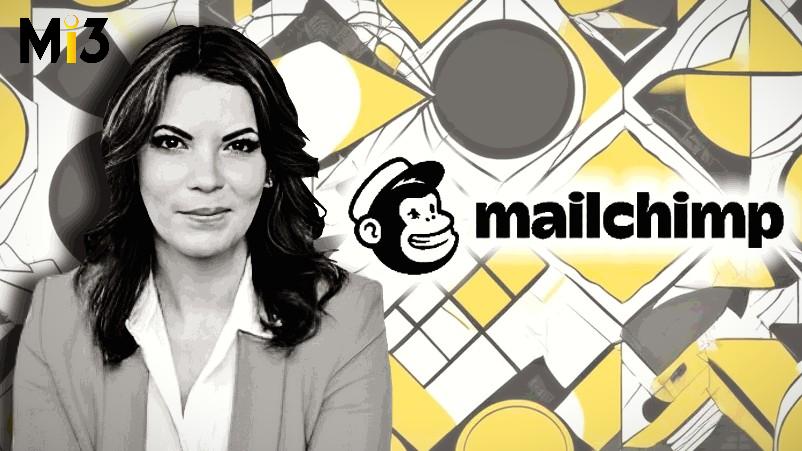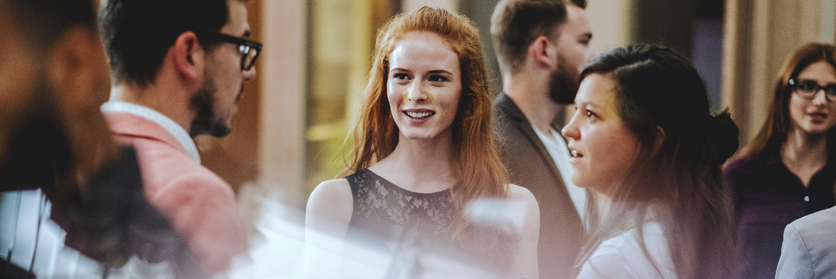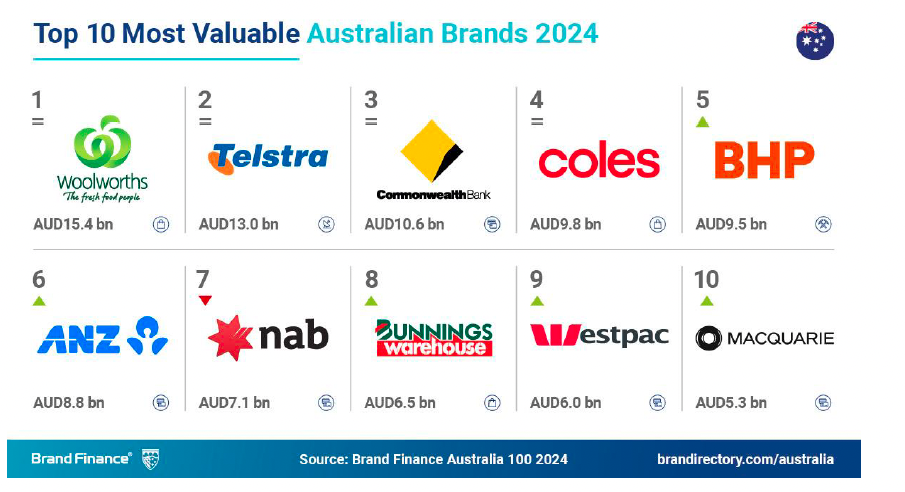Designing for data, how hyper-personalisation wins – and why an ‘uncomfortable’ in-house team beats ‘best of the best’ agencies: Intuit Mailchimp global CMO

What you need to know:
- Connection and trust are the foundations for Mailchimp global CMO Michelle Taite’s approach to the craft of marketing. And hyperpersonalisation is the way to get there, she insists.
- Yet according to the email marketing vendor’s own Brust Trust In the Age of Information Overload study, brand trust is neck and neck with free delivery, discounts and rewards as consumers battle their way through a costof-living crisis.
- All the more reason to double down on utilising data in a truly valuable way, continues Taite, who is deliberately designing her marketing approach to not only do a creative brand job – a rarity in the world of B2B marketing – but also help either encourage data sharing or harness customer insight to truly connect.
- Mailchimp’s recent Email is
Deadexhibit at the London Design Museum is a prime example of the former, while its ‘cluster’ campaign is the latter. Both achieved above expectations, with the latter scoring in the top 5% of IPSOS results. - A more recent perspective Taite has taken as a CMO, and one she believes reflects the attitude of a lot of marketers these days doing more with less, is how you create meaningful connections and brand experiences that essentially go back to owned channels.
- Taite also says Mailchimp’s internal agency, Wink, is the “secret sauce” fuelling these efforts not only thanks to its agility and speed, but because it’s encouraging bravery in creative work.
For Mailchimp’s Michelle Taite, marketing strategy ultimately comes down to two things: Connection and trust.
“At an uber level, people look to connect. Hyper-personalisation is one way by which we suggest you can connect in the most meaningful way with your customers,” she tells Mi3.
Yet combine the findings of the martech vendor’s latest Brand Trust In the Age of Information Overload study with market conditions locally, and it’s pretty obvious buying from a trusted brand and protecting the hip pocket are in a neck and neck race. While 48 per cent of customers are more likely to buy from a brand because they trust it, 45 per cent are equally swayed because they get free delivery on sale, and 46 per cent because there are discounts and rewards afoot.
“We’re at a point where to some extent, trust is equal to free shipping,” Taite admits. “It’s a moment in time where consumers are really having to make that decision between the brand I trust, and the decision I need to make about my finances.”
Therefore, the only way to strike a consistent and long-term relationship with these customers is to connect, she says.
“When you look at that secondary purchase, our data suggests about one-third are based off rituals and routines. Rituals and routines are created through connection and trust. I would argue hyper-personalisation means you provide value that showcases to customers you understand them, that you are creating a community to which they want to belong and contribute to. That’s going to be more important for some and not for others, but that’s where closer bonds are made,” Taite says.
Predictive, commercial intelligence for marketers
Email marketing vendor, Mailchimp, has been around for more than 20 years and knows a little bit about email marketing and data-driven marketing. In 2021, it became part of the broader Intuit business, sitting alongside back-office platforms like QuickBooks, Credit Karma and TurboTax. Having chalked up 500,000 or more attributes on the businesses it services and about 60,000 on consumers it serves, there’s plenty of data to drive personalised perspectives on customers. To this Mailchimp has been steadily adding AI – before genAI ever hit the headlines – and is now looking to take the next leap towards helping marketers better demonstrate their worth through its new Revenue Intelligence offering.
“To have not only the front and back business connected, but connected in a way that is proactively engaging with that question of how I increase customer and revenue growth – that to me is how we have propelled ourselves in the last three years in a way that nobody had predicted,” comments Taite.
It’s a good thing the company did, per Taite, because marketers are no longer purely marketers anymore. “With the acceleration of AI comes the acceleration of data, and with the acceleration of data comes the need to be an analyst in addition to being a creative and brilliant marketer,” she continues. “You’re only as good as the data you extrapolate.”
The second part of the CMO job is creating for your customers. What AI allows marketers to do here is go beyond focusing on the largest target customer and getting that proposition right, and hyper-personalise every target they seek to hit, according to Taite.
“With generative AI, we’ve been able to accelerate the content we create for customers across all of those journeys,” she says. “With the introduction of Revenue Intelligence in Mailchimp, we’re not only taking that predictive engine and putting it to work for who’s ready to buy, with what offering and at what time, we’re also saying here’s the campaign to go along with that based off your brand assets, how your website is performing, your previous campaigns went. It’s taking not only market conditions and everything we see across the platform but also the history we have within Mailchimp having sent almost half a billion emails a day.”
There’s a counter argument cropping up around just how effective targeting and personalisation really are, which is probably not surprising given we’re at an inflection point in the ability marketers have to do both. In a recent opinion piece for Mi3, Brand Traction’s Jon Bradshaw referenced several studies showing reach beats targeting for incremental growth; that the cost of targeting outweighs the return; and that second and third-party data does not outperform a random sample.
While Taite agrees extreme sensitivity is necessary in how data is used – and clean, consent-driven data is a must – the key here is using data in a way that adds value to the customer. In Mailchimp’s case, this means practically useful engagement first and foremost, she says.
“From a lifecycle perspective, it’s about where you are getting stuck, how can we see that before you tell us you get stuck and how can we contribute to your success,” Taite says. “A more recent perspective – and I suspect this is the case for a lot of marketers these days doing more with less – is we’re thinking about how you create meaningful connections and brand experiences that essentially go back to owned channels. Again, these channels are fuelled by first-party data, especially as you think about hyper-personalisation.
“When we think about marketing to marketers, we think about creativity and performance, meaning we fuel their performance and their thinking about creativity when they’re off platform.”
If I if we're not doing something that makes me just a little uncomfortable, it’s less fun. For me, it's part of the joy of running our marketing.
Designing a different B2B marketing approach
Which brings us to the ‘Email is dead’ immersive exhibit Mailchimp ran at the London Design Museum last year, and which Taite confirms is coming to Australia for South by Southwest Sydney year two. The exhibit led visitors through the history of email from its embryonic beginnings in the 1970s to what an email experience might look like in 2070. It was also a tongue-in-cheek way of hitting back at persistent decade-long rumours email couldn’t survive as a marketing mechanism.
The London exhibit attracted more than 25,000 attendees during its 30-day run in addition to more than 5.7 million social media impressions. The exhibit also more than 15 pieces of national news coverage.
“That exhibition allowed us to have a really meaningful experience that drove in a lot of first-party data for us but also connection with the right customers. We knew they were frequently visiting exhibits,” Taite says. During a panel conversation at last week’s Mailchimp event in Sydney, she countered Telstra CMO Brent Smart’s suggestion that such an exhibition would be more expensive than above-the-line TVC advertising, arguing the exhibit was in fact more cost effective. And it delivered data.
“To me, there’s a difference in how we think about brand,” Taite says. “There’s brand, which is what we would say is traditional top-of-funnel, which is very effective and contributes to success – as we have seen. What we’re trying to do is design for data. And when you design for data with the intent to design for personalised experiences, you end up with things like the ‘Email is dead’ immersive experience.”
As part of free exhibit, visitors are prompted to share their email addresses so Mailchimp can send an email in one year as a kind of time capsule.
“We talk about the longevity of email as a medium and how we could create a time capsule for you. People are interacting, giving data for value,” Taite says. At a local level, she points to stats showing almost 70 per cent of consumers in Australia will suggest they will give brands their data if they truly get value in return.
“That’s what we’re designing for, knowing that is very precious.”
Another example of bringing data to the fore is Mailchimp’s ‘Clustomer’ campaign. Again, Taite points to customer insight informing the work. The campaign has since performed in the top 5 per cent of IPSOS ads globally, and even higher in Australia. It was created by the vendor’s 40-strong internal agency, Wink.
“The customer insight for that campaign was based off of talking to a lot of customers who were saying I have a customer problem, I have a growth problem, I have a customer problem. When we look at retention and re-engagement versus acquisition, acquisition is five times as expensive as retention and reactivation. What we recognised is our customers weren’t using their data in the right way, therefore they felt like they had a customer problem but truly they had a clustomer problem. They were treating all customers in the same way,” Taite explains.
“Wink came in to present for our campaign work with a few concepts. They used AI to prompt some of the imagery, as they recognised in having a conversation with myself and some of the other marketing leaders, ‘clustomer’ wouldn’t make as much sense as just showing versus telling. Very quickly, we agreed this makes sense. It’s provocative and makes us a little nervous, but that’s what makes it.”
Creative was optimised off the back of creative testing. “What we found was customers preferred the version of a version similar to our first one. We created all our customer materials with humans not AI post-learnings, but they preferred this first visual as it got them to think about customers in the wrong way,” Taite says.
The resulting campaign included not only multimedia creative, but tailored out-of-home based on insights about a specific location.
“As we went down funnel, that’s when we really hyper-personalised for their specific use cases. So we’re doing both,” says Taite.
The courage of an internal agency
Through all this, Taite describes Mailchimp’s internal agency as the “secret sauce”, arguing it’s not just agility and speed an in-house agency provides, but bravery to try something different.
“It’s created a different level of courage within the marketing team and risk taking because the ideas always come back to the customer insight,” she says. “When you work with an external agency – even the best of the best – there’s a lot of turnover of talent. As a result, you’re continuously creating trust. Whereas our creative team has created trust over quite some time with our marketing team, which enables us to go one step further than we’re comfortable with at any given point.”
What won Taite over was the agency backing her idea to activate at a competitor conference in Boston, where Mailchimp knew its ‘Advanced Marketer’ customer would show up. Branded caps, entertaining videos and product news insights made up the mix, as the brand transported people from their hotels to a competitor conference in cabs wrapped in Mailchimp branding.
“It created this courage and this trust within our team that when there were great ideas, we were willing to lean in and take that risk together. Little by little, we created more and more of those experiences,” Taite says.
“It’s about pushing the agency to not only give you the work aligned with the brief, but work that’s going to make you really uncomfortable. If there’s not that tension in the meeting, it’s on us as the leaders to say, make me a little more uncomfortable. I’ve certainly been in meetings where they’ve made me really uncomfortable.
“We’ve had some incredible conversations as a result of what could we learn from this? What could we take from this? How do we test some of this versus just no that’s it.”
Taite insists she’s picked a lot of the out-there ideas Wink has put forward since then. “There have certainly been some I laugh at and say, oh my gosh, that is going out before I leave,” she laughs. “Honestly though, I get excited about it. If I if we’re not doing something that makes me just a little uncomfortable, it’s less fun. For me, it’s part of the joy of running our marketing.”





